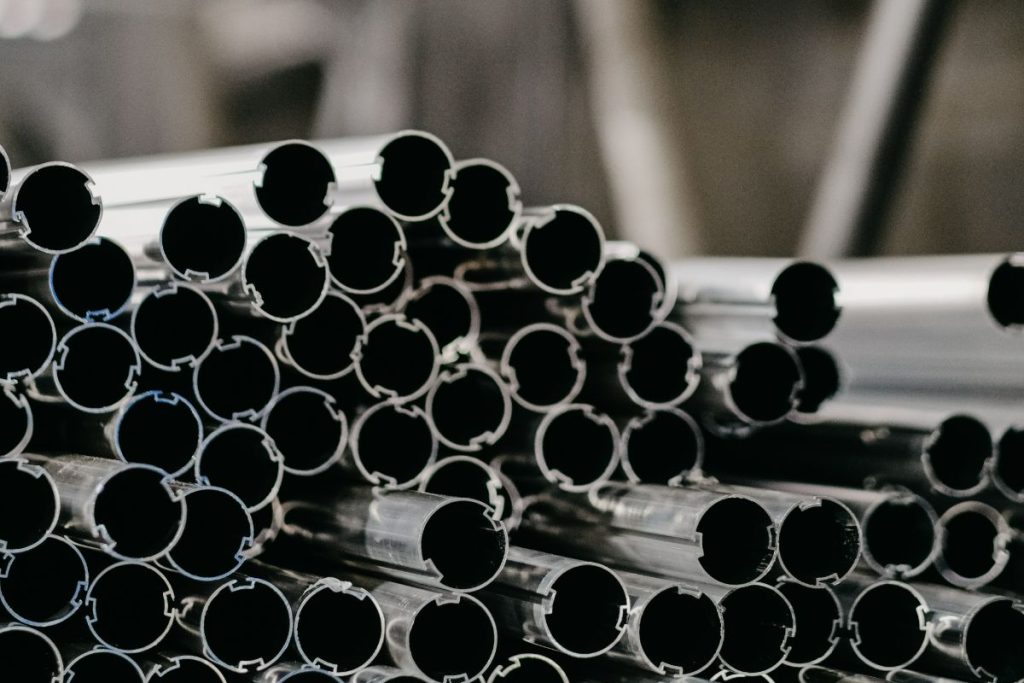Overview
- Finding the right GI pipes can help you achieve both cost-efficiency and long-term reliability.
- Trusted suppliers like Supreme Steel Pipe Corp. offer high-quality GI pipes that meet industry standards, ensuring durability and optimal performance.
The strength, durability, and corrosion resistance of galvanized iron pipes (GI) make them necessary for a variety of plumbing and construction applications. Choosing galvanized iron pipes at the right price can help you achieve both cost-efficiency and reliability in your projects.
Supreme Steel Pipe Corp. offers high-quality GI pipes that meet industry standards, ensuring long-lasting performance and durability. Understanding these factors will help avoid overpaying or undervaluing the pipes needed for your projects. With the right knowledge, you can confidently choose the best GI pipes for your needs.
What are Galvanized Iron Pipes?
GI pipes are steel pipes coated with a layer of zinc through a process known as galvanization, which helps prevent rust and corrosion. Its most common method is hot-dip galvanization, where steel pipes are dipped in molten zinc, creating a strong, protective layer. The coating shields the steel from environmental factors that could cause rust and corrosion, ensuring the pipes remain durable.
Because these pipes are so corrosion-resistant, they are valuable in industrial, plumbing, and outdoor settings. While initially more expensive than some alternatives, their long-lasting performance and minimal upkeep make them a cost-effective choice in the long run.
Factors Affecting the Price of GI Pipes
The price of GI pipes can vary depending on several factors that influence both production and market demand. Understanding these variables is necessary for anyone looking to make an informed purchase and avoid unexpected costs.
Size and Length
Larger-diameter pipes, such as those 2.5 inches and above, cost more due to the increased material required for production. Similarly, longer pipes, ranging from 20 to 40 feet, are more expensive since they require more raw material and may need additional shipping costs. These factors, along with fluctuations in raw material prices and market demand, directly influence the overall pricing of GI pipes.
Galvanization Quality
Not all galvanized iron pipes have the same level of zinc coating. Higher-quality galvanization processes provide thicker and more durable coatings, which are more expensive but offer better protection against corrosion and wear.
Therefore, the quality of galvanization can significantly impact the longevity and reliability of the pipes, particularly in harsh and corrosive environments.
Material Quality
High-quality steel, with a lower carbon content and minimal impurities, offers greater strength, and corrosion resistance, making the pipes more durable but also more expensive.
The thickness and uniformity of the zinc coating applied during galvanization also affect the pipe’s corrosion resistance, with thicker coatings providing better protection.
Furthermore, pipes made from superior materials and with optimal galvanization tend to have a higher initial cost but deliver better long-term performance and require less maintenance.
Manufacturing Process
Hot-dip galvanization provides a thick, durable zinc coating by immersing pipes in molten zinc. This process offers superior corrosion resistance and longevity, making it ideal for harsh environments.
On the other hand, electro-galvanization uses an electric current to apply a thinner, more uniform zinc coating, resulting in a smoother finish and more precise coating thickness. The method chosen affects the cost, with hot-dip galvanized pipes generally being more expensive due to their robust coating and longer lifespan.
Potential Risks of Overpaying or Undervaluing GI Pipes
Overpaying can result in overspending on pipes that may not offer superior quality or performance, straining budgets, and reducing funds for other project needs. Conversely, undervaluing pipes by opting for low-cost options can lead to quality issues like inadequate galvanization or inferior materials, which increase the likelihood of corrosion and frequent replacements.
Cheap pipes also pose risks such as leaks, system failures, and contamination of water supplies, affecting both functionality and safety. Poor-quality materials often result in higher long-term costs due to ongoing repairs and maintenance.
Choosing pipes that balance cost and durability ensures performance and reduces unnecessary expenses.
How to Find the Right Price for Your Project
Securing the right price for GI pipes is essential for maintaining a balanced project budget. Start by researching reliable suppliers like Supreme Steel Pipe Corp., a trusted local provider offering quality products and competitive pricing.
Additionally, comparing prices from multiple sources helps identify fair market rates, considering factors like material quality and supplier reliability.
Look for bulk discounts or promotions, especially if your project demands a significant quantity of pipes, to maximize cost savings. Don’t forget to include shipping and installation costs in your total expense calculations, as these can significantly impact your overall budget.
Key Takeaway
Partnering with reliable suppliers like our team at Supreme Steel Pipe Corp. helps ensure high-quality galvanized iron pipes and excellent service for your project needs. Choosing galvanized iron pipes at the right price is essential to balancing cost-efficiency and durability while avoiding unnecessary expenses or risks.
Reach out to our team today to discuss your project and discover the best option available.
